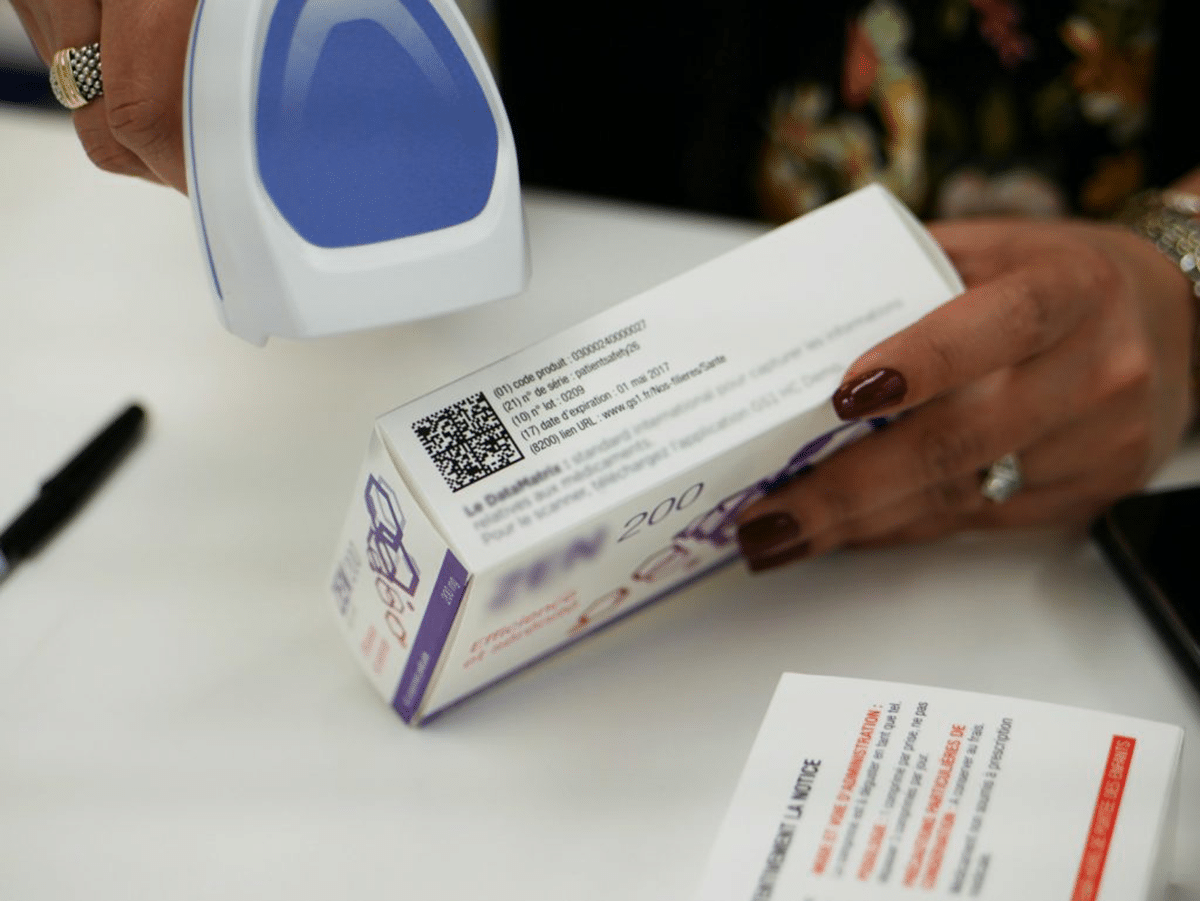
File photo courtesy of GS1 Philippines
MANILA, Philippines — Local pharmaceutical industry players were urged to adopt 2D barcodes, which include Quick Response (QR) codes, as a measure to fight the spread of counterfeit medicines and medical supplies in the domestic market.
This measure is important as the country remains on the radar of the United States Trade Representative (USTR) for fraudulent medical products, said GS1 Philippines, the leading organization for implementing local barcode standards.
Article continues after this advertisementIn a statement Wednesday, GS1 Philippines said it is implementing the Global Trade Item Numbers (GTINs) in the country which can capture crucial data, such as the date of manufacture, expiration date, and the manufacturer’s name that enhances product identification and verification.
FEATURED STORIES BUSINESS National ID gives more Filipinos ‘face value BUSINESS BIZ BUZZ: Unwinding Gogoro … quietly BUSINESS Polvoron maker seeks P500 million capital for expansionThese complex data can be stored by utilizing 2D barcodes, which use vertical and horizontal patterns like QRs.
READ: FDA: 6 widely used OTC drugs faked, sold publicly
Article continues after this advertisementThe current 1D barcode technology can only identify product codes.
Article continues after this advertisementConsumers can access data and verify the product by scanning the QR code, which cannot be done on 1D barcodes.
Article continues after this advertisement“The threat of counterfeit medicines compromises both consumer safety and trust in healthcare providers. By leveraging barcode technology, we can establish a cohesive integration of global standards that prioritizes patient safety, particularly in regions facing serious challenges with counterfeit products,” GS1 Philippines president Roberto Claudio said.
Pharmaceutical and Healthcare Association of the Philippines (PHAP) and GS1 Philippines officer and trustee Teodoro Padilla has affirmed the local pharmaceutical industry’s support in adopting 2D barcode technology among domestic players.
Article continues after this advertisementREAD: Public warned vs fake pain reliever laced with deadly drug
“PHAP supports this innovation, acknowledging its potential to verify products and prevent counterfeit medicines from reaching patients. To further strengthen our fight against fake drugs, PHAP urges collaboration among pharmaceutical companies, regulatory bodies, healthcare providers, and the general public to expedite the adoption of this technology, strictly enforce regulations, and increase awareness to ensure the safety and well-being of Filipino patients,” Padilla said.
According to GS1 Philippines, there are 31 companies in the healthcare supply chain that have shifted to 2D barcodes.
Subscribe to our daily newsletter
A global initiative is being pushed that by the end of 20278mbets, 2D barcodes will have been widely adopted and point of sales (POS) will have been able to scan these barcodes. (PNA)
READ NEXT Philippines, South Korea seal deals for 3 big infra projects Japan funds food processing training center in CamSur EDITORS' PICK UPDATES: 2025 elections precampaign stories Marcos smiled, walked away when asked about VP Duterte’s accusation WPS: US missile deployment to PH key for combat readiness – US general Espenido retracts drug-related allegations vs De Lima Tropical Storm Kristine slightly intensifies; Signal No. 2 in 5 areas QC Mayor Belmonte highlights social services in State of City Address MOST READ SC issues TRO vs Comelec resolution on dismissed public officials Tropical Storm Kristine slightly intensifies; Signal No. 2 in 5 areas LIVE UPDATES: Tropical Storm Kristine Green spaces driving growth: How Filinvest City's Park System enhanced its property value View comments